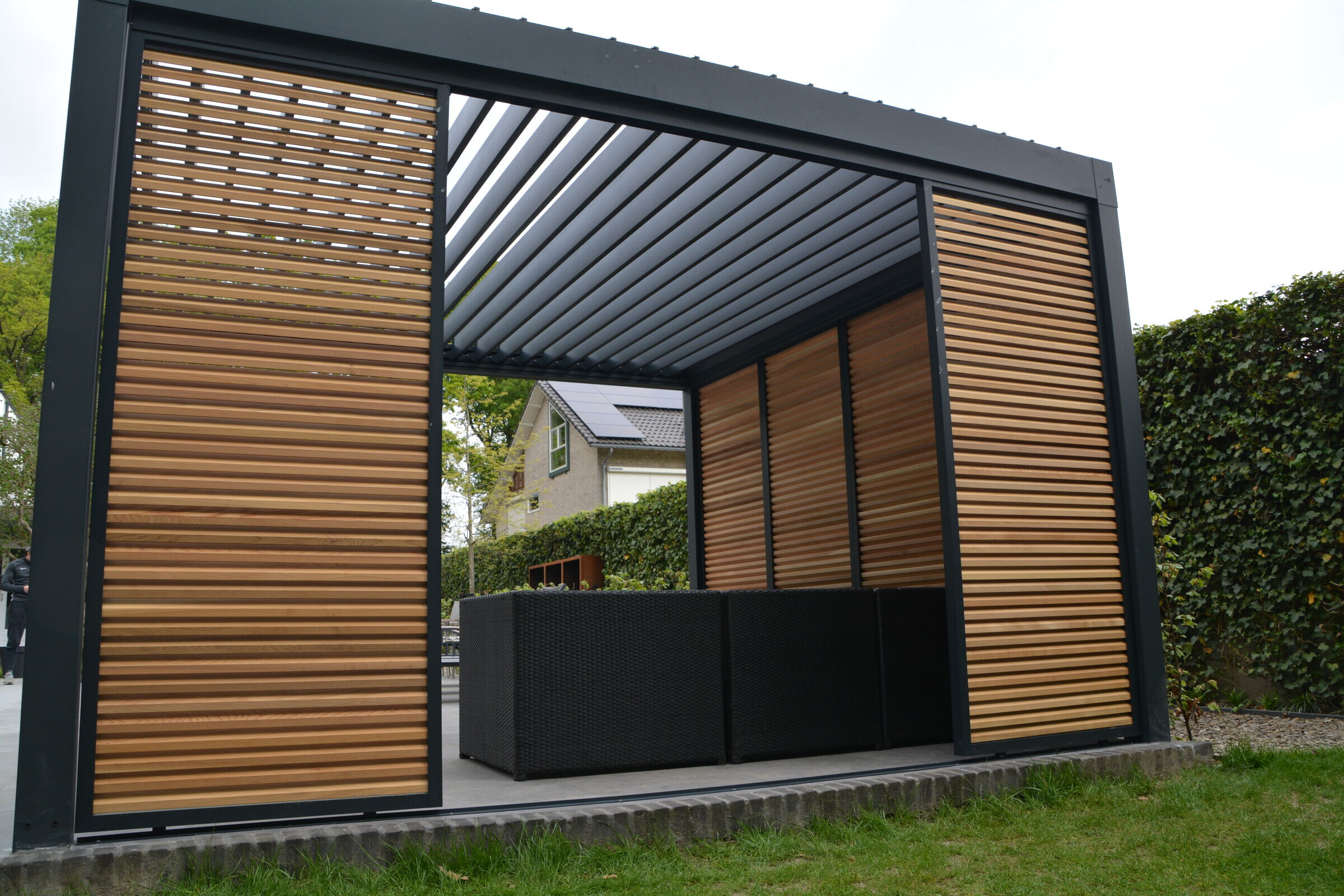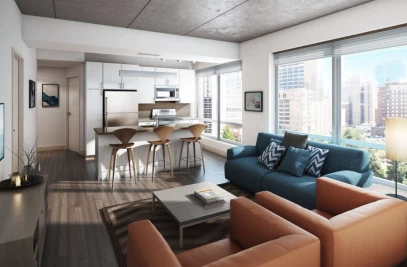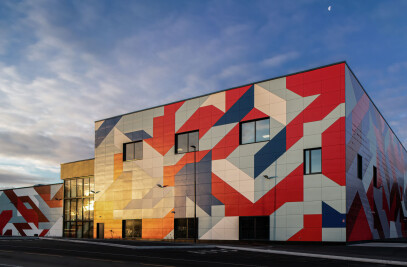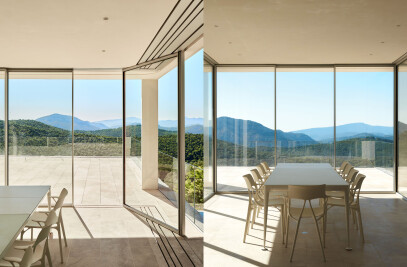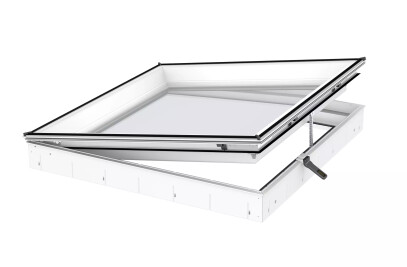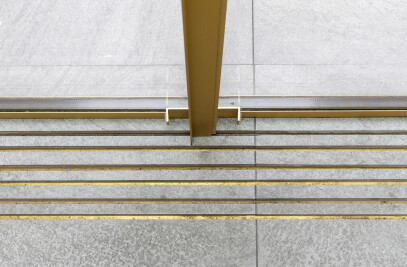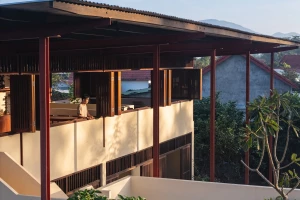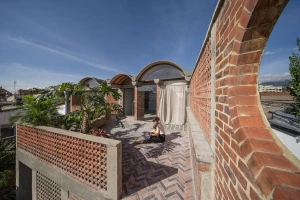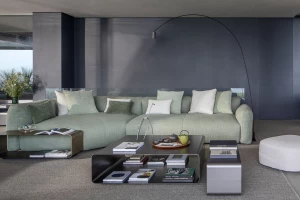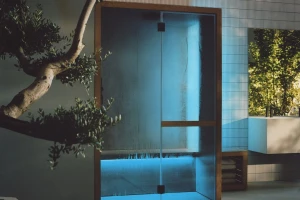Sliding panels with slats offer the best of both worlds. If you want to keep out the sun or desire privacy, you simply slide the louver screen in front of the window or door. If you want free access or a view, you slide them to the side.
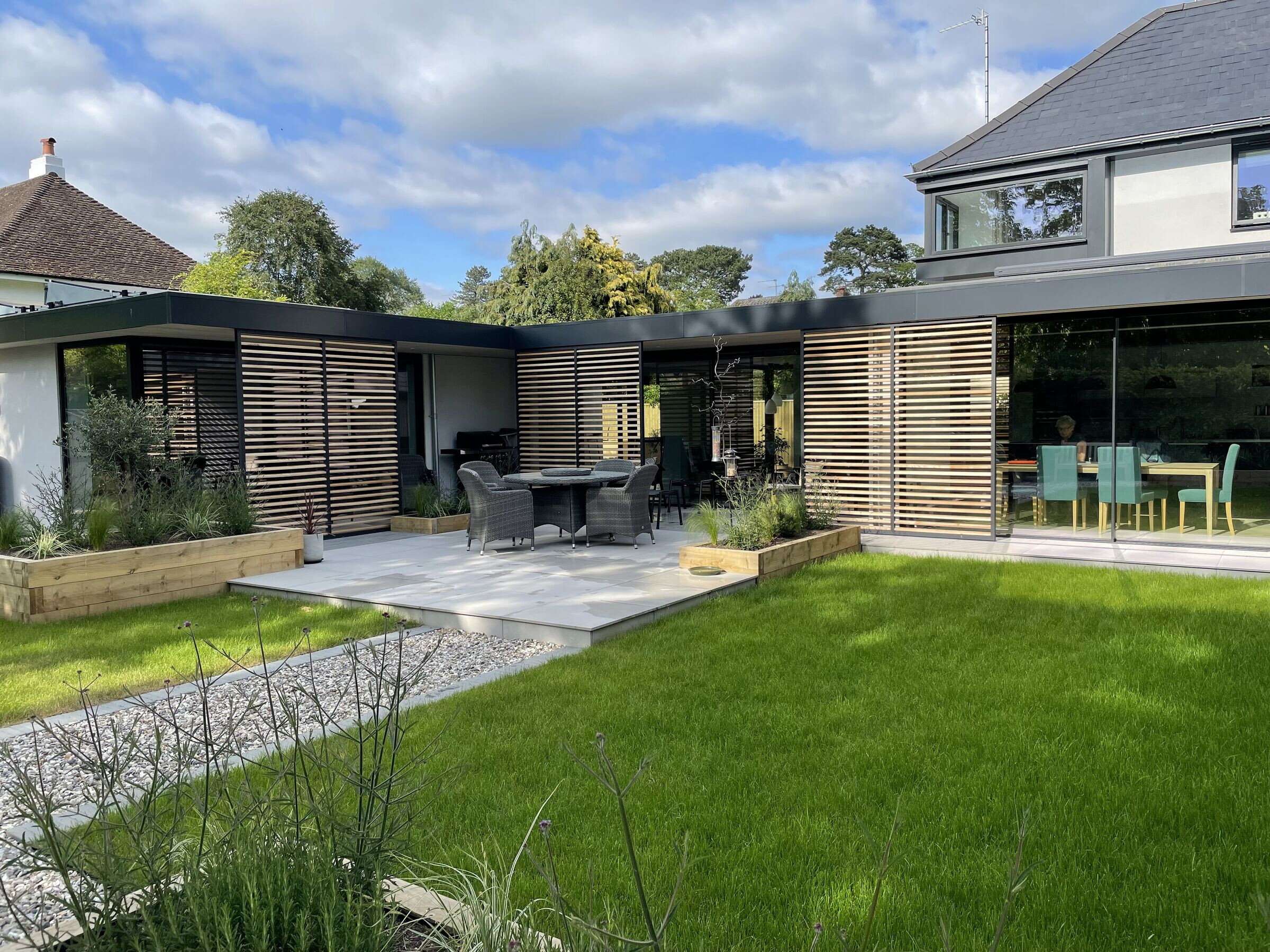
Running louvers
Sliding louvers are a special application of exterior facade slats. The louvers are mounted in panels. These panels are mounted in a guide. Operating the louver panel is a matter of sliding a panel in its entirety in front of a door or window, or away from the door or window. Hence, an ideal application for any sliding door.
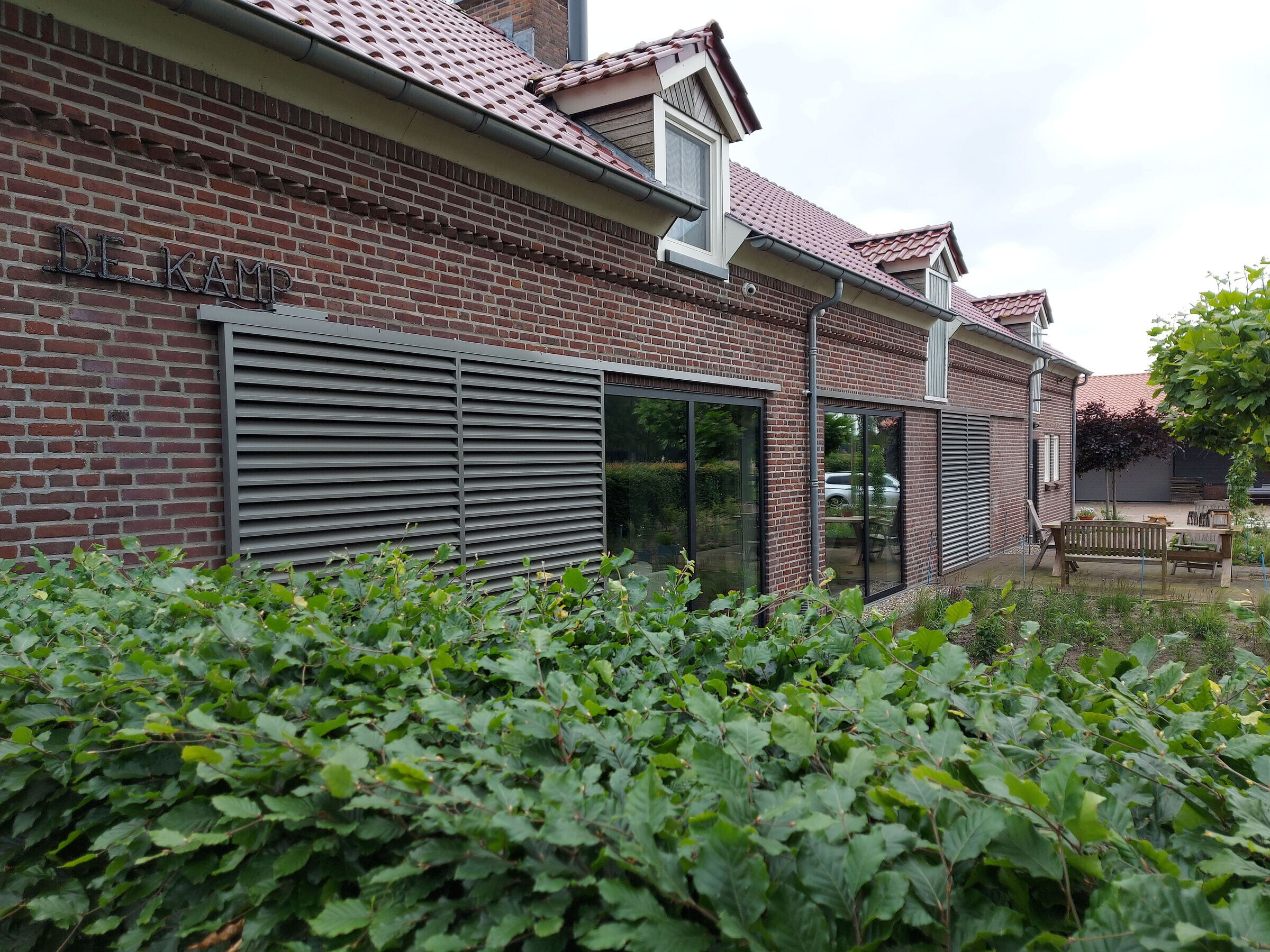
The blades are placed in a fixed position. Usually at an angle of 45°. In the summer, when the sun is high, direct sunlight is often sufficiently blocked. And you retain the advantage of daylight. On a (partly) cloudy day, you slide the panels to the side and you have a full view. And plenty of daylight.
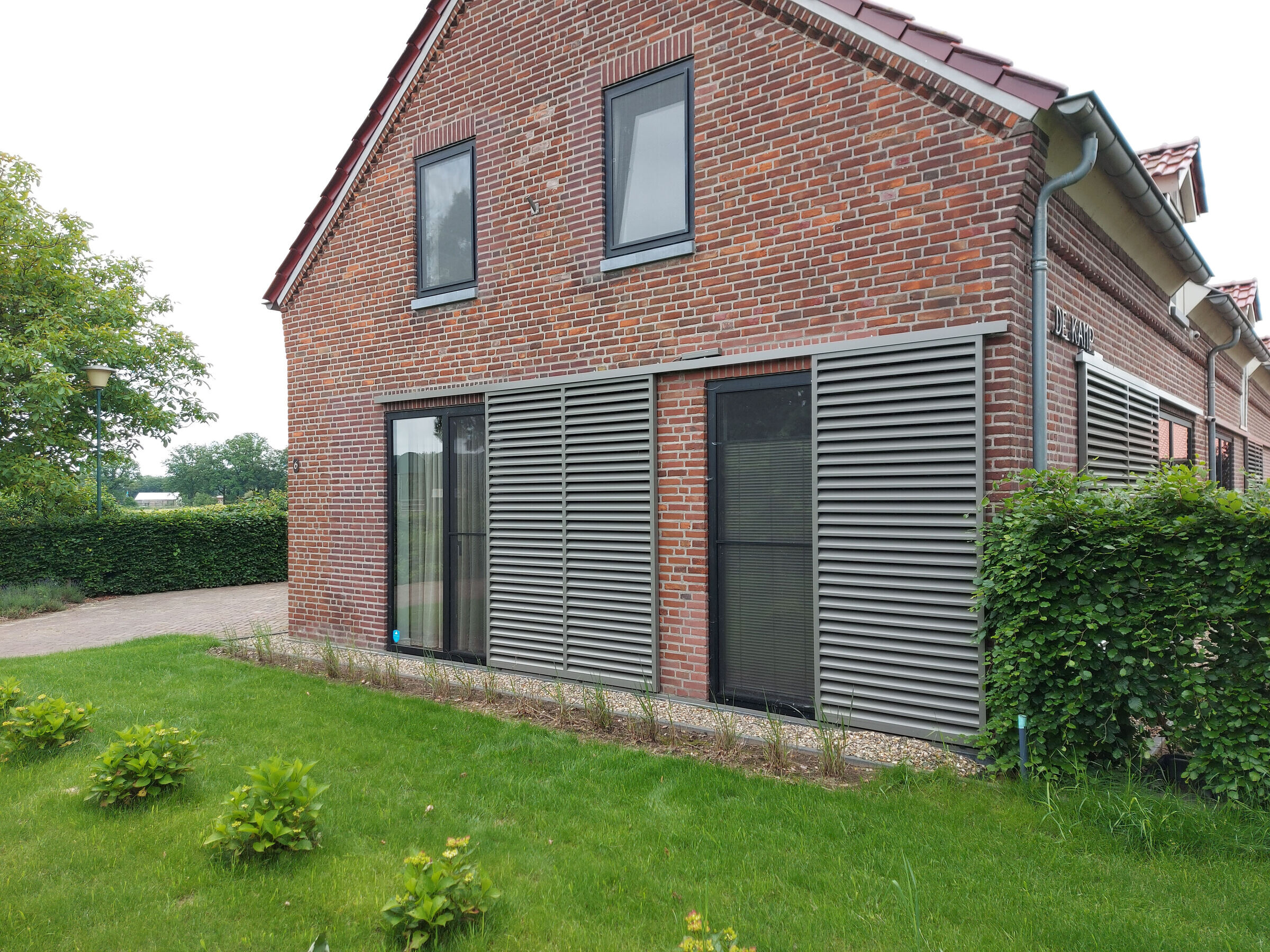
Guide systems
Sliding panels are placed in guides at the top and bottom. To open and close the louvers, you move a panel as a whole sideways in these guide systems. If panels have to slide past each other, a multiple rail system is required, otherwise a single rail system is sufficient.
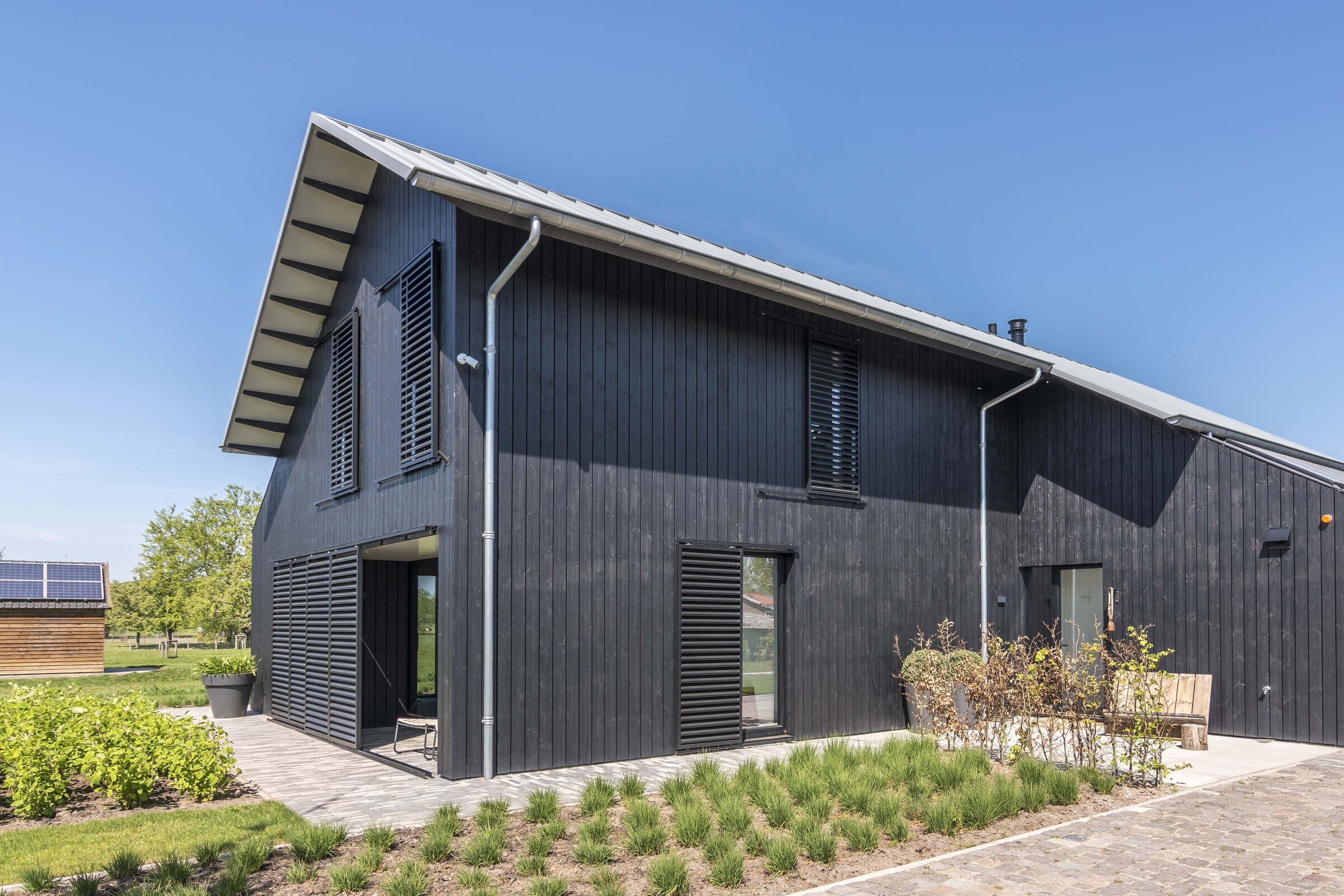
In new construction or renovation, the conductors can be installed at the top and bottom, for example in an overhang. This is done in consultation with the architect and contractor. If the sliding panels are installed in an existing home, mounting against the facade is the simplest solution.
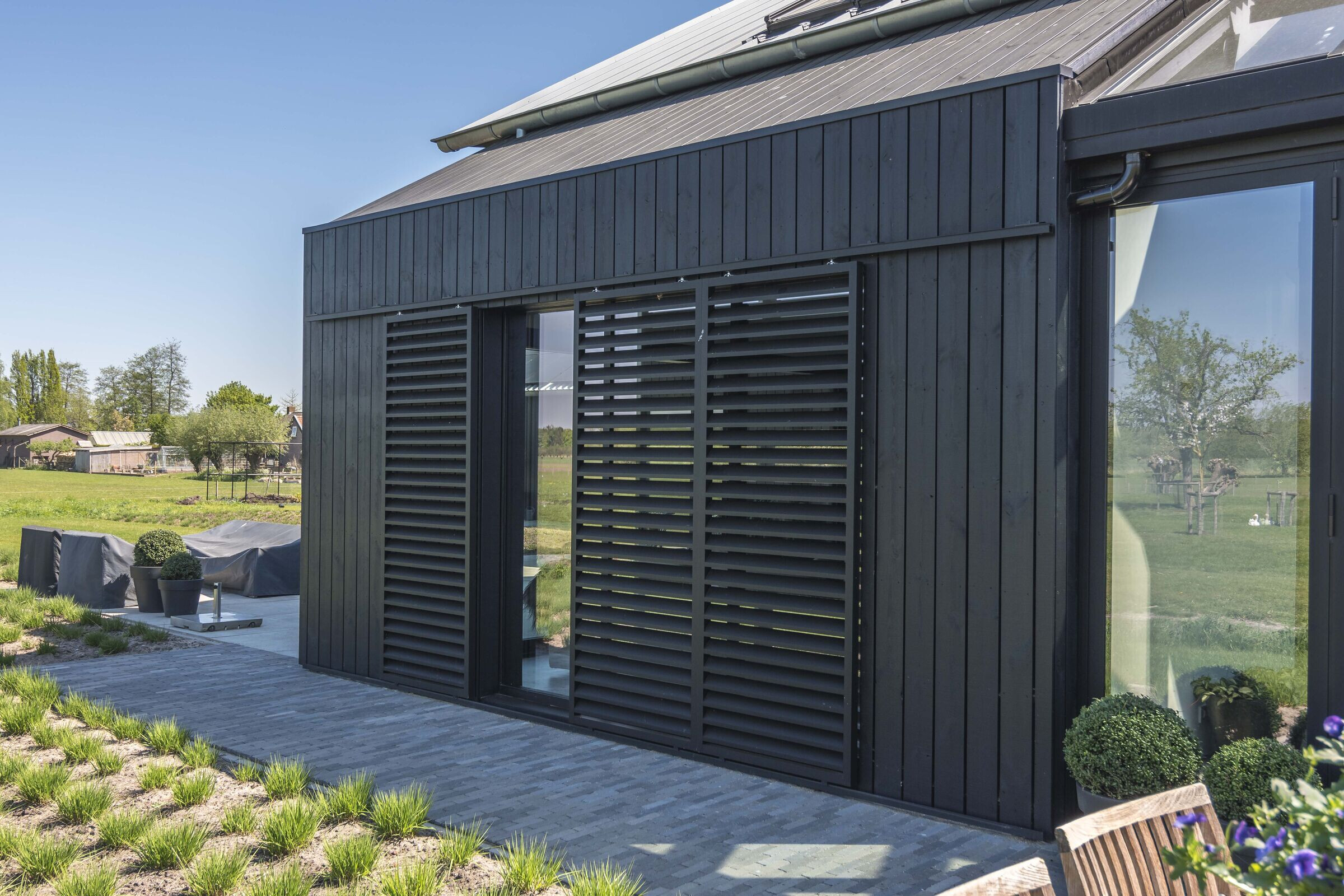
Louver profiles
For louver panels, slats are available with various profiles. Regardless of whether you choose aluminium or wooden louvers, they are often at a fixed angle in the frame. Aluminium louvers can have rounded corners, be diamond-shaped, elliptical or z-shaped. Wooden slats are always diamond-shaped, with a Rhombus profile.

Treatments
The guide systems and the frames in which the slats are placed are always made of aluminium. The aluminium parts of sliding panels are coated. You can choose from two gloss levels, namely 30% (matte) or 70% (high gloss). A matt colour can be combined with a fine structure, resulting in a visible and tangible relief.
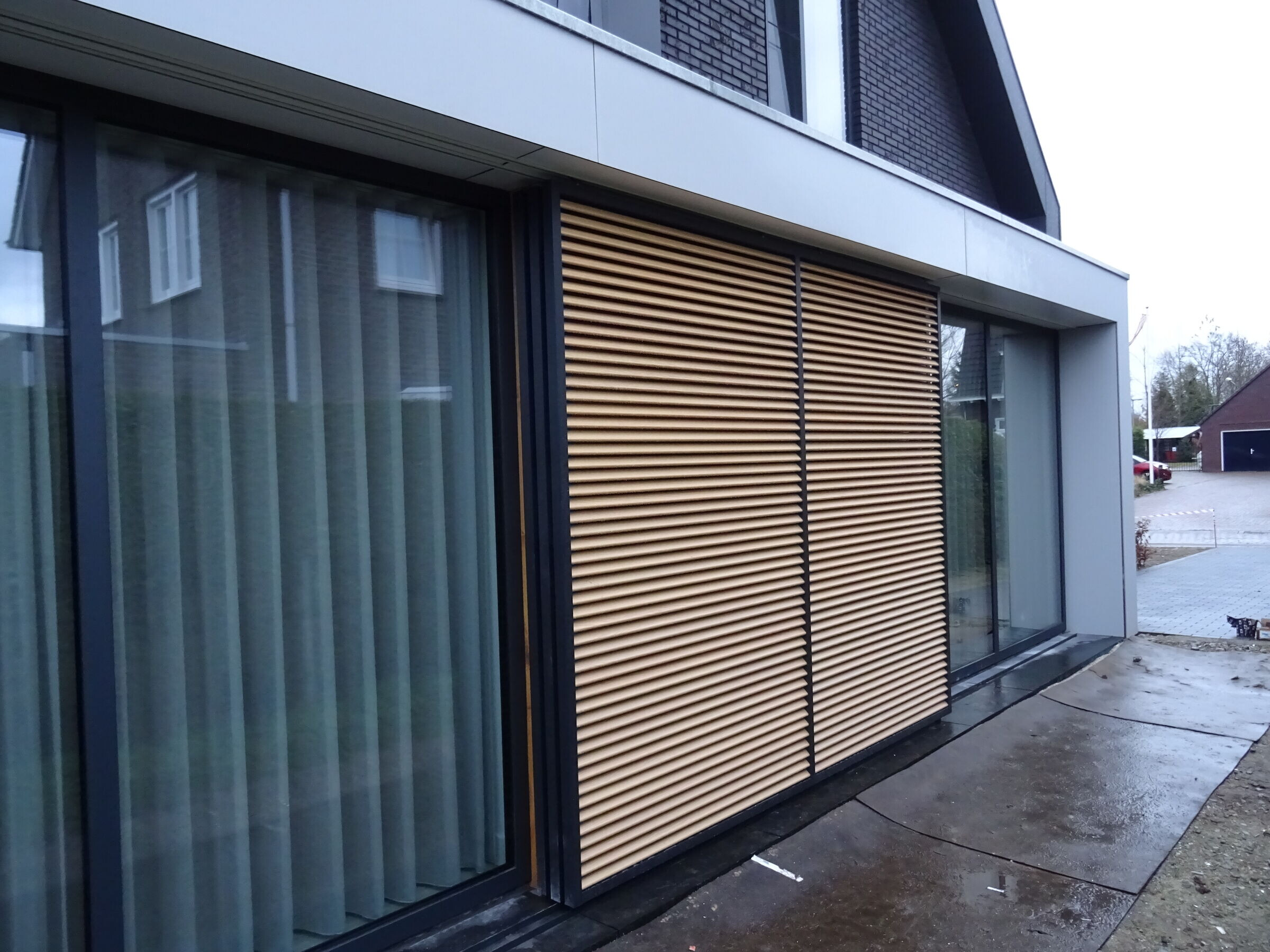
If you live near the coast and the air is salty, you can consider a seaside coating. In this case, the aluminium is pre-treated a little more intensively than usual. Due to the longer pre-treatment time, aluminium is better protected against more aggressive environments, including sea air.
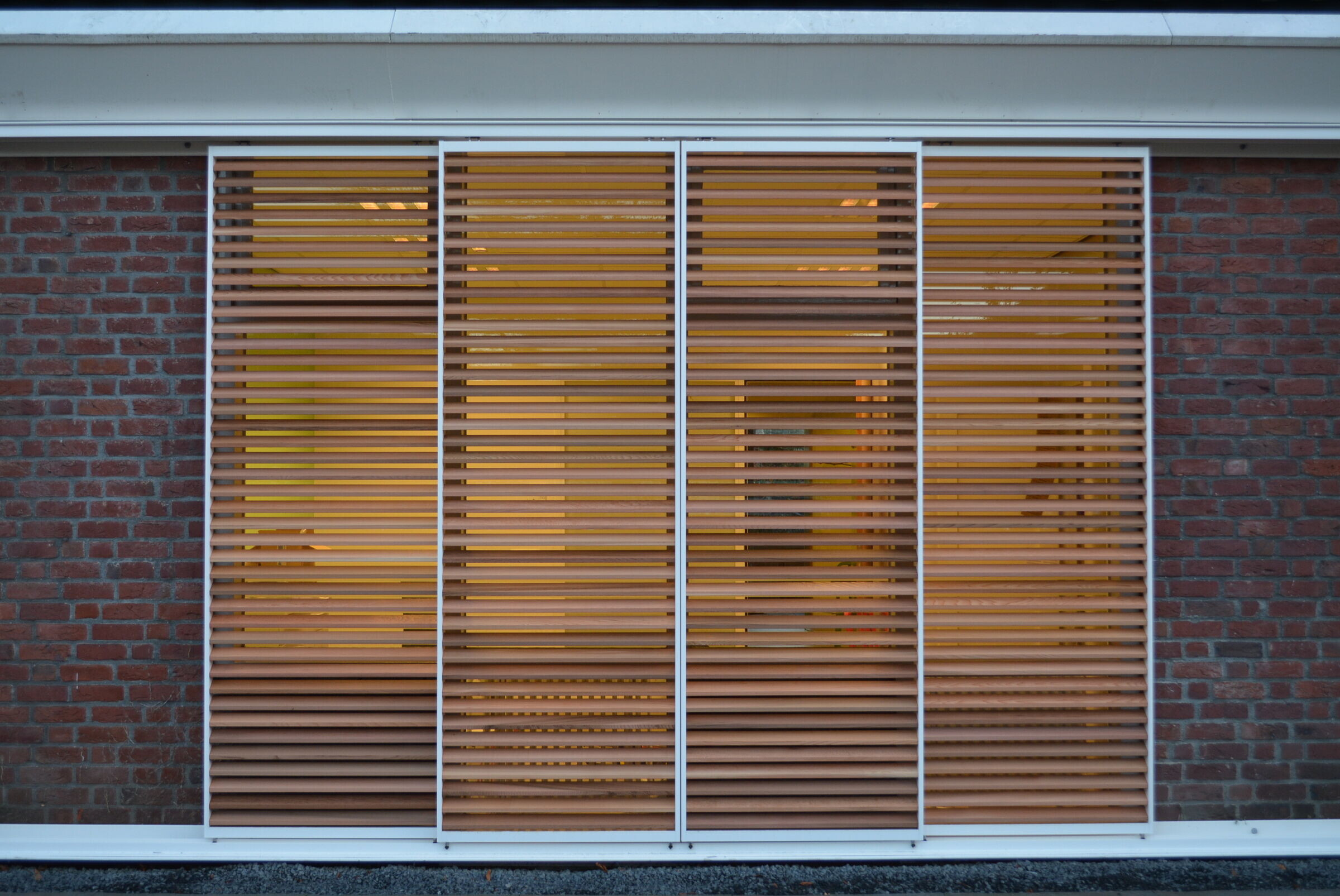
Wooden slats are usually made of Western Red Cedar. You can stain, oil or paint wood. Not treating wood is also a popular choice. The wood will then turn grey over time under the influence of the weather conditions. This is a natural process and the big advantage is that you do not have to worry about it.
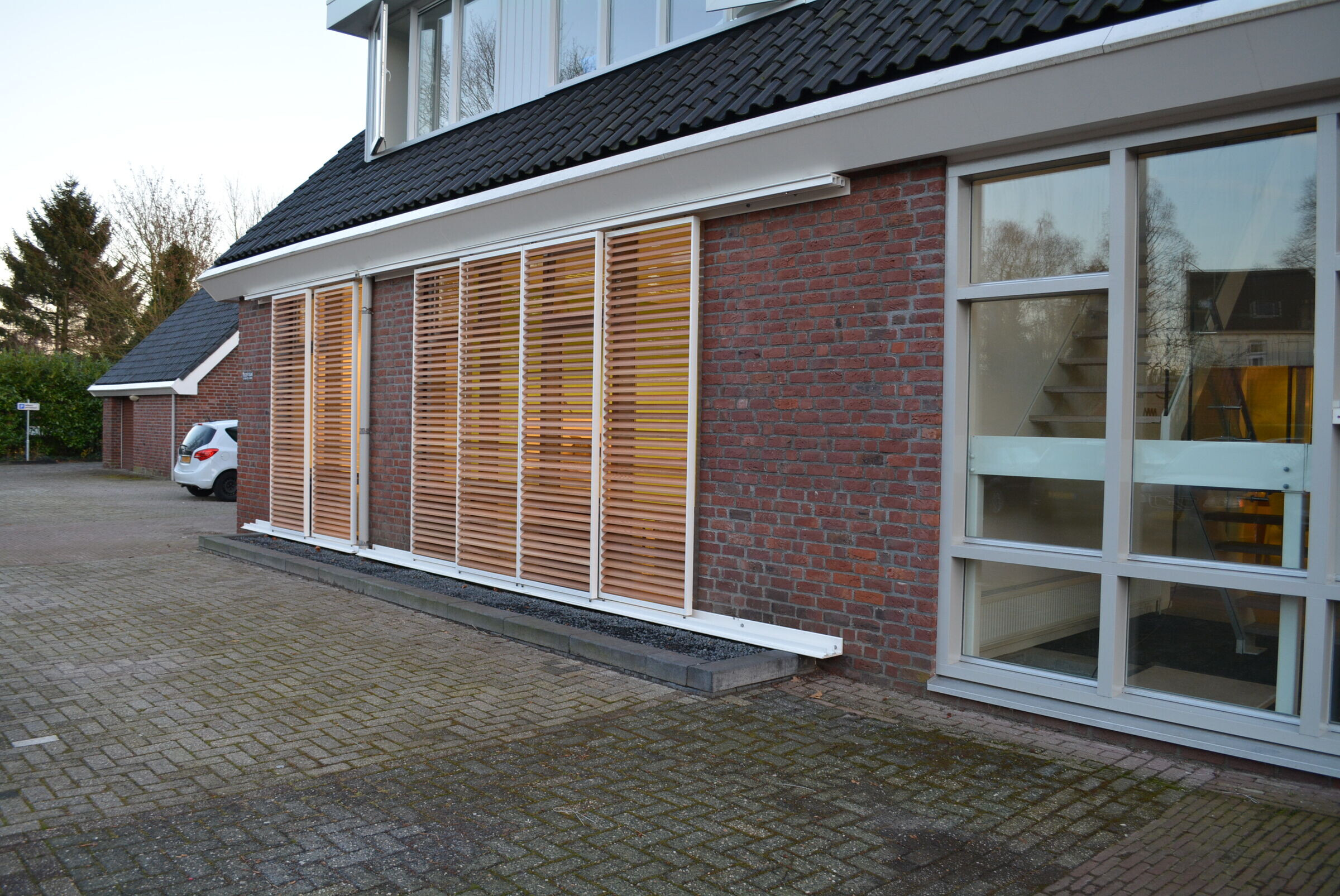
Finally, there is the option of wood effect. In this case, the aluminium slats are coated multiple times. First, you apply a base colour, which approximates the colour of the desired type of wood. Then the grain is applied. The result is an aluminum louver with the appearance of wood.
